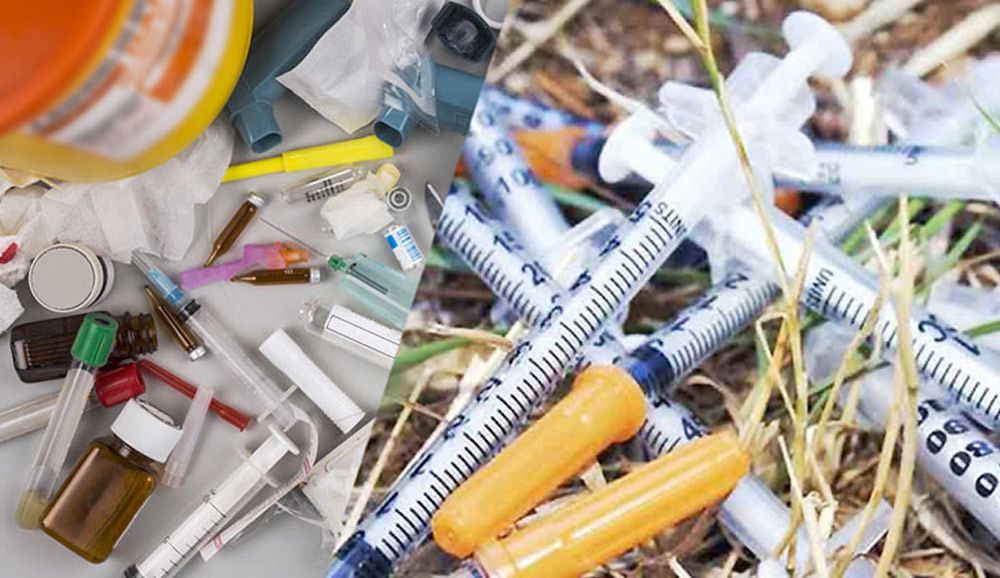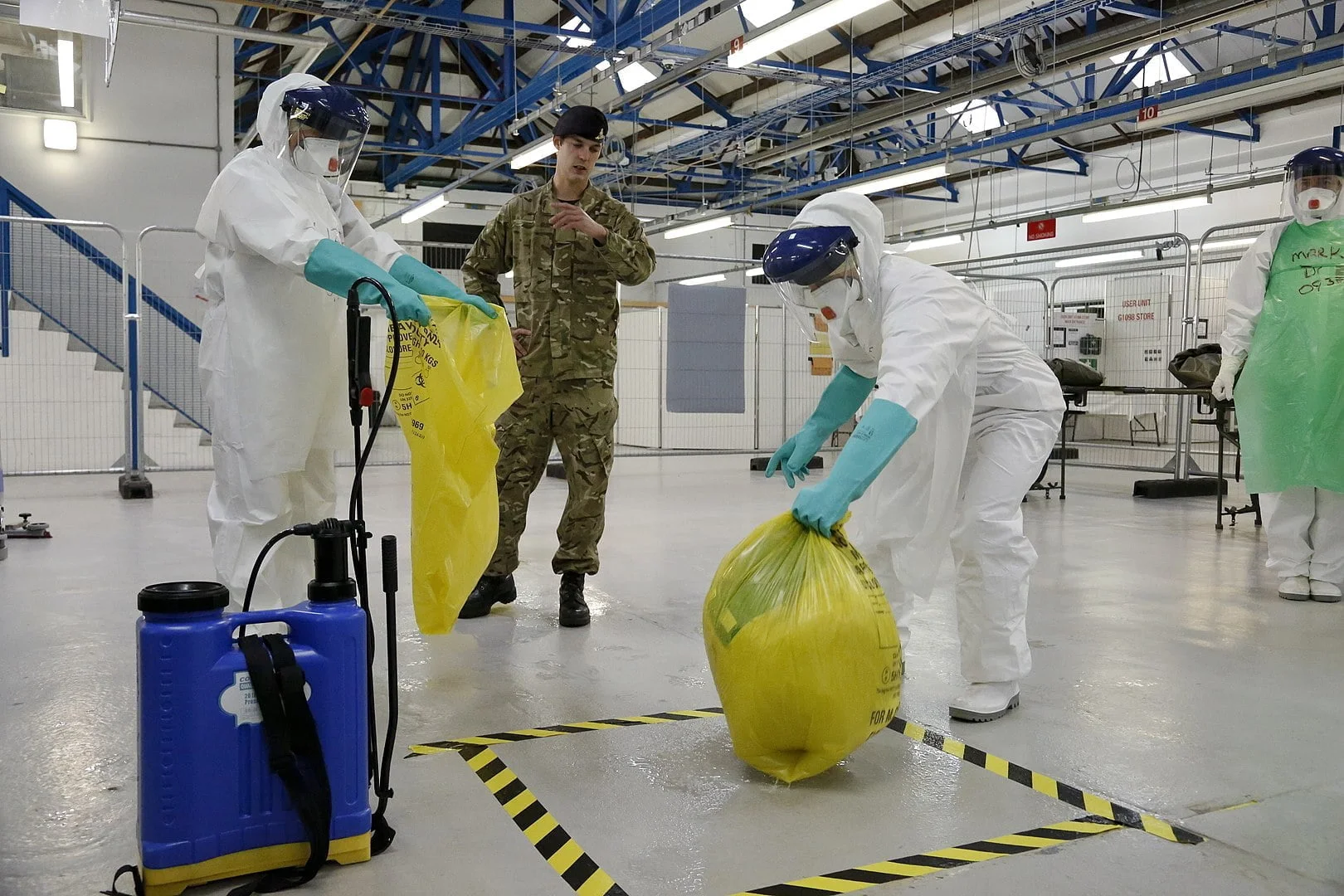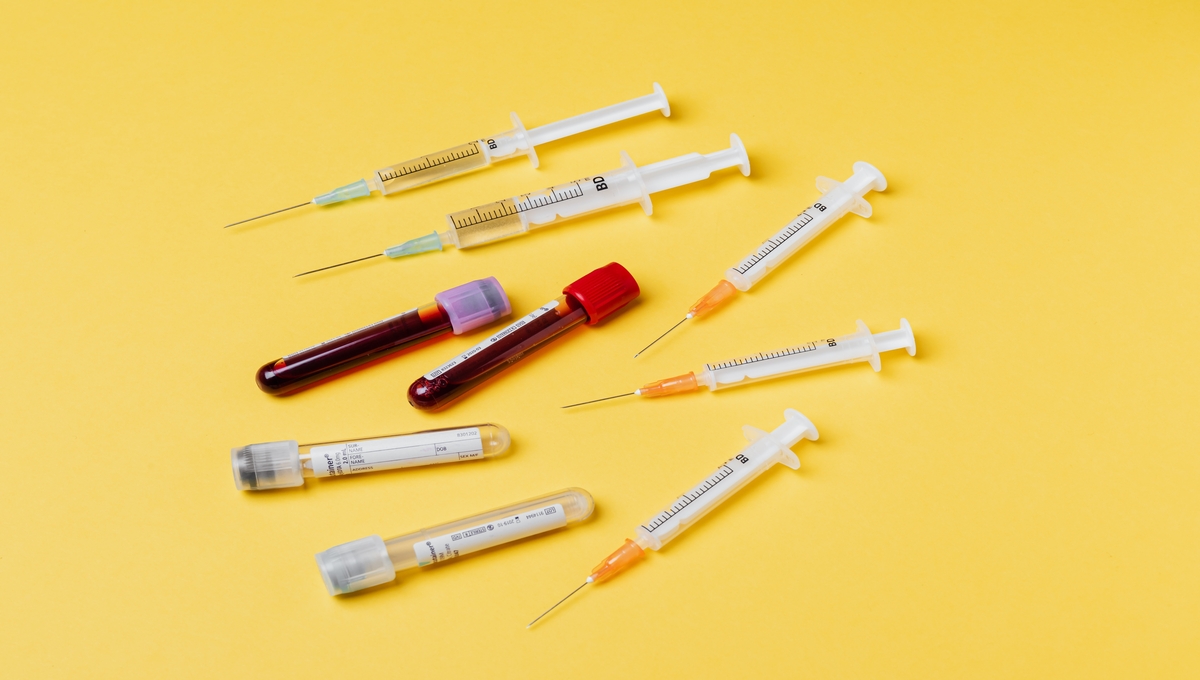Proper disposal of biomedical waste is of utmost importance in the sectors of healthcare services and research institutes. To safeguard public health and the environment, there is an urgent need to answer the question of whether biomedical waste management can attain circularity as society shifts progressively towards a sustainable future. Approximately 85% of the total biomedical waste generated is general, non hazardous waste and the remaining 15% is hazardous waste that is infectious, toxic, or radioactive. The annual rate of injections administered rounds up to 16 billion on a global scale. However, the resulting waste materials generated from this process are not disposed of properly. Hence, it is essential to ensure the proper disposal and treatment of materials contaminated with hazardous and non hazardous materials that align with the circular economy for safe and environmentally sound waste management.
This article delves into the importance of waste management and attaining circularity in this field. It examines the complex interface of healthcare, and environmental conservation and the feasibility of adopting circular strategies for biomedical waste management. The article analyses prospects for linking it with the broader ambitions of circularity and sustainability as well as the complexities of a sector traditionally guided by by stringent regulations.
Understanding biomedical Waste Management

Biomedical waste is any kind of waste that contains infectious materials or has the potential to contain infectious materials and is generated during healthcare treatments for both animals and humans. They are generated by healthcare facilities during diagnosis, treatment, and immunization, as well as during medical research procedures. Biomedical waste often contains both solid and liquid materials that need to be scientifically separated and treated for proper waste management. It is important for healthcare professionals to have adequate knowledge and a careful mindset towards biomedical waste management. Improper management of biomedical waste poses a great health risk for healthcare staff, patients visiting the facility, the surrounding environment, and the community. It can cause a variety of communicable diseases as well as air, water, and land pollution.
Biomedical waste can also be classified as general, chemical, sharps, radioactive, infectious, pharmaceutical, and pressurised waste. These different categories of waste materials require different methods of disposal. Given below are the conventional methods of biomedical waste management:
- Incineration: The controlled burning of biomedical waste at temperatures above 800°C is known as incineration. Waste is reduced to ash and gases during this process. Effective pathogen killing, waste volume reduction, and energy production through heat recovery are all benefits of incineration. However, unless improved emissions control technologies are used, incineration releases pollutants and greenhouse gases. There are also concerns about the hazardous ash residue.
- Autoclaving: Biomedical waste is autoclaved by being exposed to high-pressure saturated steam at temperatures typically ranging from 121°C to 134°C. The waste is effectively sterilized and cleaned. Autoclaving has a number of benefits over incineration, including the ability to destroy pathogenic bacteria, a reduction in waste volume, and environmental friendliness. The residual waste must be handled and disposed of properly because autoclaving may not entirely remove some chemical and pharmaceutical waste.
- Chemical treatment: Chemical treatment is the process of neutralising microorganisms and chemically modifying waste using disinfectants or other chemical agents. Some techniques call for the use of chemicals like lime or chlorine. Chemical treatment is appropriate for some waste forms and can be useful in disinfection. It doesn’t emit emissions like incineration. But it’s important to pick the right chemicals and use them responsibly. Some chemicals have the potential to be dangerous, so treated waste disposal needs to be strictly monitored.
- Microwaving: Biomedical waste is heated and sterilised in the microwave using electromagnetic radiation, which creates heat within the waste. This process is thought to be an ecologically safe substitute for incineration because it can sterilise trash efficiently while reducing volume. However, careful calibration is needed to ensure that all waste is effectively treated while microwaving, and waste may also need to be further processed or disposed of after microwaving.
Challenges of biomedical waste management
The healthcare sector encounters a number of challenging barriers as it attempts to adopt circularity in the management of biomedical waste. These problems are complex and include logistical, legal, and environmental constraints that call for creative solutions in order to accomplish sustainable and circular waste management practises. Below are the challenges of biomedical waste management faced by the medical sector.
Safety and regulation
Healthcare professionals need to alter their behavioural patterns in order to safely manage biomedical waste while adhering to strict rules. It can be difficult to adjust to new waste segregation techniques, ensure safety, and follow intricate regional requirements.
Technology and feasibility
Sustainable strategy implementation frequently necessitates a sizable upfront investment in infrastructure and cutting-edge technology. The absence of access to these technologies in many healthcare facilities, especially in areas with limited resources, presents both technological and financial obstacles.
Pharmaceutical waste and Pathogen persistence
Disposing of expired or unused pharmaceuticals is a concern, and some pathogens can persist in waste materials. Managing pharmaceutical waste efficiently and safely while reducing the danger of pathogen persistence is a difficult task.
Public perception
It’s crucial to establish trust in the safety and efficacy of recycled medical supplies. It is difficult to persuade the public that recycled or used medical equipment is secure, especially when considering the possibility of pathogen transmission.
Awareness and resource availability
In order to apply sustainable practises safely and successfully, healthcare workers require proper training. Maintaining current knowledge of developing waste management techniques requires ongoing education. The difficulties are exacerbated by resource availability, which can be unpredictable for recycling and repurposing.
Circular biomedical waste management

A paradigm shift in the medical industry’s approach to waste disposal can be potentially observed in the circular management of biomedical waste. This newly established concept focuses on minimising waste generation, increasing resource recovery, and minimising the environmental impact of biomedical waste. Waste materials are not only discarded in a circular biomedical waste management system; rather, they are viewed as valuable resources that can be recycled, reprocessed, or dutifully disposed of in an environmentally acceptable way.
As the world is progressively adopting circular economic strategies for waste management, organisations have taken effective strategies to deal with the issue. IMAGE (Indian Medical Association Goes Eco-friendly) is one such initiative taken by the Indian Medical Association. It is state of the art Common Biomedical Waste Treatment and Disposal Facility located in Palakkad, Kerala. The waste treatment plant embraces modern technologies along with proper staff training, facilitation for waste procurement, segregation, transportation, treatment as well as data maintenance of the overall process. Such eco friendly initiatives create a positive impact on the community as well as the environment.
Impacts of Circular Biomedical Waste Management

Circular biomedical waste management has significant impacts at the environmental, economic, and social levels. Therefore, it is important to adopt circular strategies and methods for biomedical waste management to create a healthy, pollution-free environment. Below are the environmental, economic, and social impacts of circular biomedical waste management:
Environmental impact
- Environmental footprint: The environmental footprint can be considerably reduced via circular biomedical waste management. Fewer raw materials are taken and less waste is disposed of in landfills or burned when recycling, reusing, and remanufacturing practises are used, reducing pollution and habitat damage.
- Energy savings: By harnessing the energy component of biomedical waste, circular methods, including waste-to-energy operations, might lessen the demand for additional energy sources and help to reduce the usage of fossil fuels.
- Greenhouse Gas Emissions: The treatment of biomedical waste in a closed cycle can significantly lower greenhouse gas emissions. Reduced waste equals lower levels of methane and other hazardous gas emissions from landfills and incinerators.
- Resource conservation: By recycling medical tools, supplies, and materials, circularity protects valuable resources, including electronics, plastics, and metals. This, in turn, reduces the need for resource-intensive mining and manufacturing.
Economic impact
- Cost Savings: Healthcare facilities and waste management firms can save a great deal of financial resources by managing biological waste in a circular fashion. Reusing and recycling materials lessens the need to purchase new products, and waste-to-energy processes can generate revenue through energy production.
- Employment generation: Employment opportunities are frequently created by the circular economy in the waste management, recycling, and remanufacturing industries. This may result in the local economy expanding and more jobs becoming available.
- Entrepreneurship and innovation: Entrepreneurship and innovation are fostered through circular approaches to waste management technology and methods. This supports entrepreneurship and expands the markets available to companies that offer circular solutions.
Social Impact
- Health and Safety: Maintaining the public’s health and safety requires proper biological waste management. Waste is handled, stored, and moved using circular practises to reduce health risks to community members and employees.
- Community Involvement: Circular biomedical waste management frequently requires community involvement, promoting recycling and waste reduction. Communities that are involved in sustainable practises tend to feel more accountable and share similar environmental objectives.
- Equity and Access: By lowering the costs associated with waste disposal, circular techniques can increase the accessibility of important healthcare treatments. This may result in more equal access to high-quality medical treatment.
- Regulatory Compliance: Circular waste management practises assist healthcare facilities in adhering to environmental norms and standards, minimising danger to their reputation and legal standing.
Circular strategies for biomedical waste management
It is important to adopt a circular biomedical waste management system in order to reduce the negative impacts of improper waste management at the environmental, social and economic levels. Below are a few effective strategies for circular biomedical waste management.
Waste segregation and source reduction
Healthcare facilities are increasingly using waste segregation at the source, classifying trash into various kinds such as infectious, hazardous, and non-hazardous to lessen cross-contamination. This reduces cross-contamination and facilitates targeted disposal or recycling efforts.
Recycling and reprocessing
Plastics, glass, and metals from non-hazardous biomedical waste can be recycled. To decrease costs and waste, many single-use medical devices can be safely reprocessed, sterilised, and reused. This not only reduces waste but also cuts costs for healthcare facilities.
Waste-to-energy methods
Biomedical waste can be easily transformed to energy through incineration. Energy generated during incineration can be harnessed for various purposes, increasing resource efficiency. The amount of biohazardous waste that must be disposed of in landfills can be reduced by turning biological tissues and cultures into energy.
Safe chemical treatment and closed loop disposal
A significant portion of biomedical waste consists of pharmaceuticals. Hazardous biomedical waste can be treated with chemicals to neutralise dangerous components before disposal. This is known as closed-loop pharmaceutical disposal. Closed-loop systems reduce waste and environmental effect by returning unwanted or expired pharmaceuticals to manufacturers or authorised disposal locations.
Product design and data driven decision-making
Sustainability and safety standards are guaranteed when practises are in compliance with environmental rules. The circular strategies can be completed by encouraging circular practises in product design, such as using minimal disposable components. Manufacturers can design products with minimal disposable components, promoting durability and repairability. Processes for waste management can be made more efficient by implementing data analytics and digital technologies. These tools aid in monitoring waste streams, pinpointing areas that need repair, and lowering inefficiencies.
Conclusion
A vital first step towards sustainable healthcare practises is to seek circularity in the management of biomedical waste. This field has the potential to have a substantial positive impact on the environment, the economy, and society through innovative methods and a dedication to reimagining waste as a resource. It is imperative for a healthier, more environmentally conscious future that one embraces circularity in this situation.

